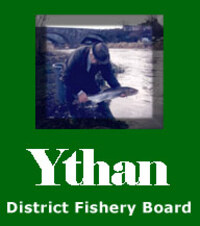Many thanks to
The Fyvie Estate for facilitating this camera's location and to
Aberdeenshire Council for capitally funding its installation in partnership with
The Ythan District Fishery Board Fyvie Castle, a remarkable architectural gem dating back to the thirteenth century, presents a captivating spectacle adorned with majestic towers and turrets. Nestled amidst meticulously manicured parkland, this enchanting castle enjoys a convenient location in close proximity to Aberdeen. Imbued with a rich tapestry of history, myth, and legend, the castle is renowned for its opulent interiors, intricate ceilings, and world-renowned art collections, rendering it a truly enchanting venue for weddings, corporate events, and private gatherings.According to historical records, Fyvie Castle is believed to have been originally commissioned by King William the Lyon in the early thirteenth century. It holds great significance as the site of an open-air court held by King Robert the Bruce and served as the childhood residence of the future King Charles I. The captivating folklore surrounding the castle includes renowned ballads such as 'The Bonnie Lass o' Fyvie,' which depicts the tale of a dragoon captain who sacrifices his life for the love of a Fyvie girl. Similarly, 'Andrew Lammie' narrates the ill-fated love affair between Annie, a miller's daughter, and Lord Fyvie's trumpeter. These ballads may have historical underpinnings, as the final resting place of the young woman is said to be located within Fyvie churchyard. Additionally, one of the prophecies attributed to Thomas the Rhymer pertains to Fyvie Castle, prophesying that it will not thrive until the discovery of three specific stones (a prophecy predating the existence of the church, which presently features three Pictish runestones).Fyvie Castle stands as a testament to both architectural grandeur and captivating legends, inviting visitors to immerse themselves in its storied past and captivating atmosphere. In the realm of environmental concerns, the Scottish Government has designated the River Ythan catchment as a Nitrate Vulnerable Zone in response to the proliferation of algal mats in the river during the 1990s. The resulting restrictions on the use of fertilizers in the catchment received criticism from many farmers, as 90% of the land within the catchment area is dedicated to agriculture. However, this designation and subsequent actions taken to address the issue, with support from the European Union's LIFE Fund through the Ythan Project, have led to notable improvements in water quality. An increasing number of farmers have adopted techniques such as the creation of buffer strips between their fields and the river, as well as nutrient budgeting. The rise in agri-environment schemes in the area and the individual river restoration efforts undertaken under the auspices of the Ythan Project have contributed to the expansion of wildlife habitats in the Ythan catchment.






